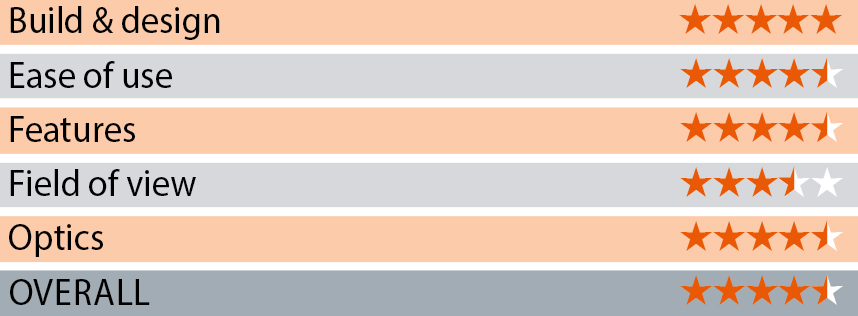FIRST LIGHT
Explore Scientific G400 15×56 roof prism binoculars
Satisfyingly sturdy, this pair fits the bill for moongazing and sharp, colourful stars
VITAL STATS
• Price £329
• Optics Fully multi-coated
• Aperture 56mm
• Magnification 15x
• Prisms Schmidt–Pechan roof, BaK-4 glass, phase-coated
• Angular field of view 4°
• Focusing Centre focus
• Eye relief 16mm
• Interpupillary distance 61–70mm
• Weight 1.1kg
• Supplier Telescope House
• Tel 01342 837098
• www.telescopehouse.com
Small and light enough to be easily portable and held in the hands for short periods, but also with sufficient aperture and magnification to reveal more detail than popular hand-held binoculars like 10x50s, 15×56 binoculars occupy a special niche. We were eager, then, to see how Explore Scientific’s G400 15x56s performed.
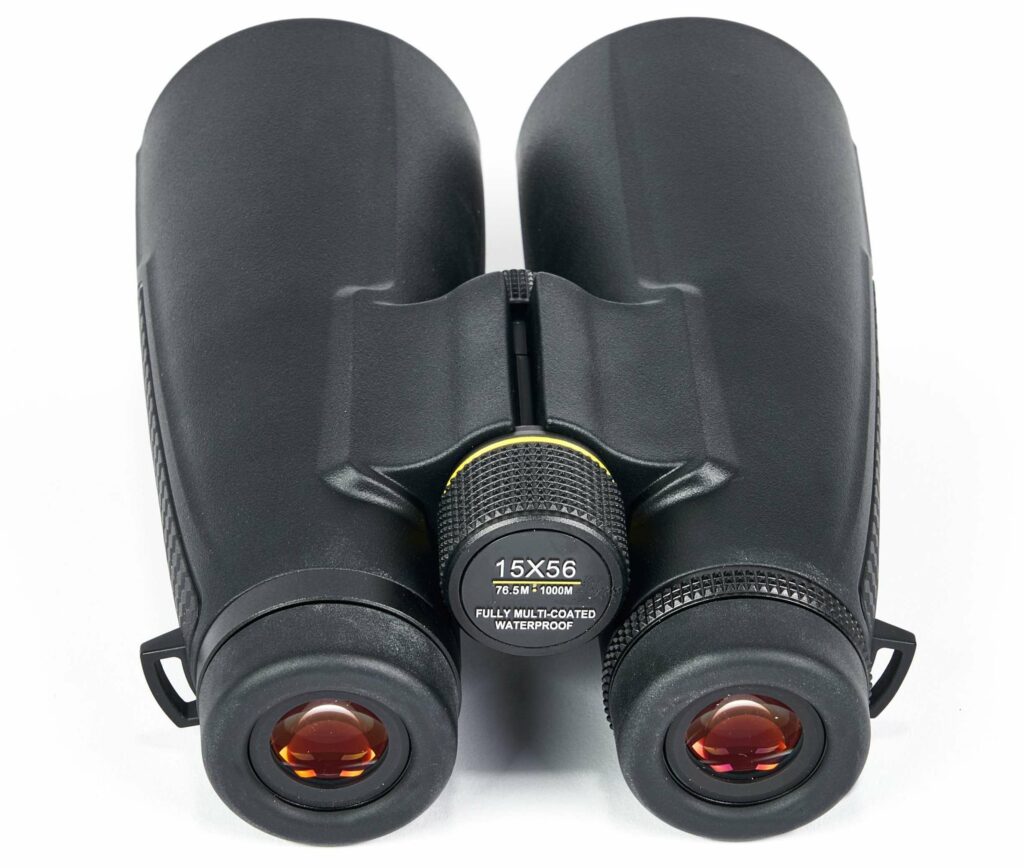
Taking them out of their packaging, our first impressions were of robustness and compactness. This is due in part to their heft and the substantial untextured (but not slippery when dew-dampened) rubber armour. The smoothly operating hinge has a satisfying resistance to adjustment, which should prevent you from accidentally resetting the interpupillary distance.
The centre focus wheel is also silky-smooth in operation and has no backlash at all. It takes two complete turns of the wheel to get from 4.5m close focus to slightly beyond infinity focus at the other extreme. This slow and smooth focusing means that it is extremely precise, which makes it easy to find the point at which the target object snaps into focus. The ‘beyond infinity’ focus enables people with mild short-sightedness to use the binoculars without glasses if they wish. The right eyepiece adjustment has a range of +/-3 dioptres, so the binoculars will tolerate some focus disparity between your eyes.
Twist-up eye-cups
We found that the 16mm eye relief was just sufficient to enable us to see the full field of view when wearing glasses with the binoculars’ eye-cups twisted fully down. The eye-cups also click into a definite half-way up position, and if you use this it will not easily slip. The focus wheel is at the eyepiece end of the hinge, so if you hold the binoculars by the objective end of the tubes (which is recommended to reduce shake when observing terrestrial and low-elevation targets), you will need to move a hand to refocus. This inconvenience will be unlikely to occur when you are using them for high-elevation targets, when it’s better to hold them closer to the eyepiece end.
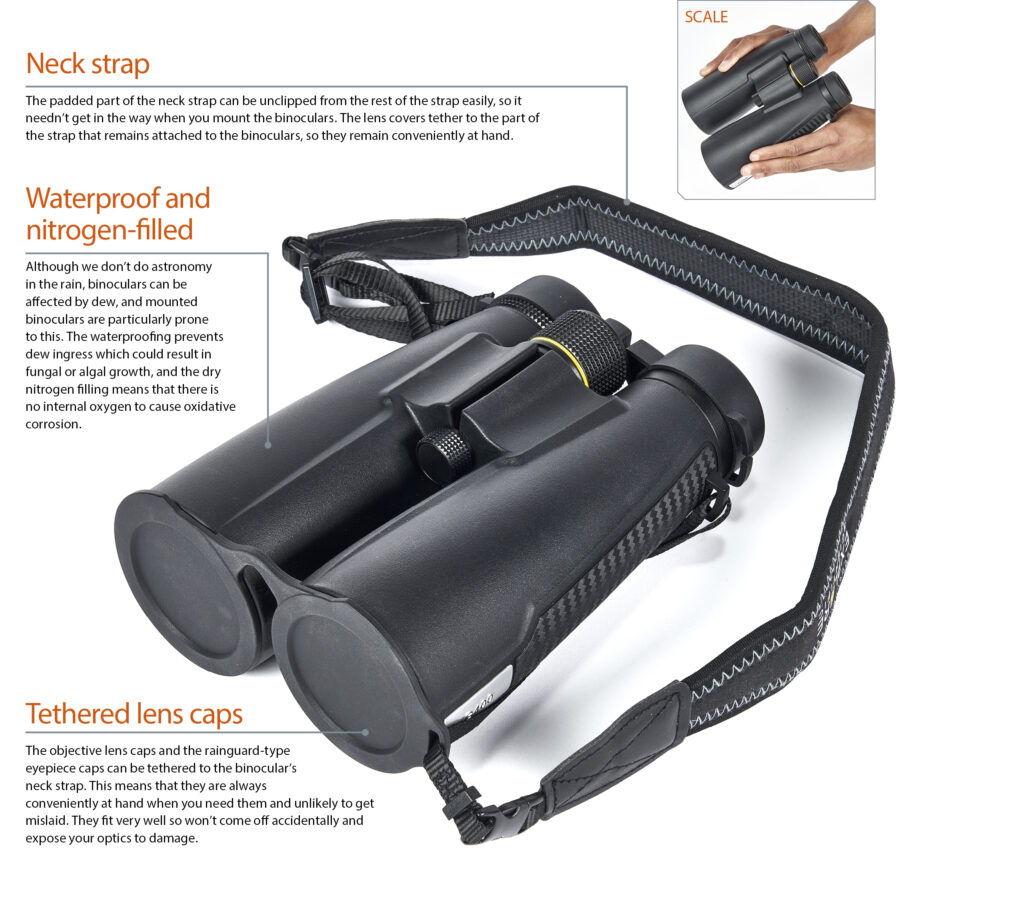
Binoculars like this are far more effective when they are mounted. There is a threaded socket for a tripod adaptor at the end of the hinge. At 56mm these are near the upper limit for aperture in roof prism binoculars of this design, so there is very little room between the tubes, and you will need to choose a very narrow tripod adaptor, ideally the type that clips onto a captive pin in the socket.
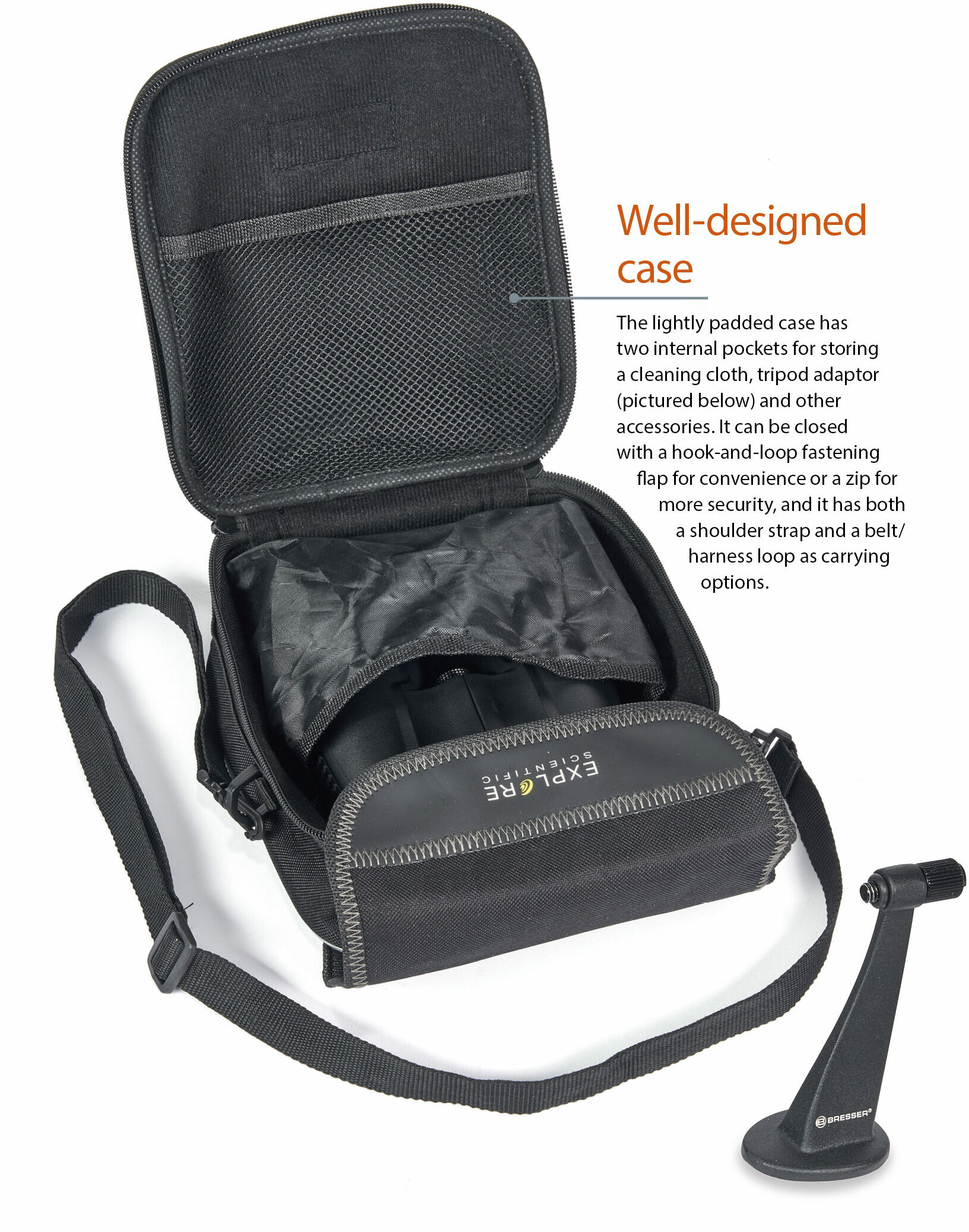
Ready and steady
For testing, we mounted them on a monopod with a joystick head. The anti-reflective coatings on the transmissive surfaces and phase coating on the prism roofs combined with the precise focus to give sharp images that were bright and had good colour fidelity. Chromatic aberration, which manifests as coloured fringes on bright objects, was very well controlled in the middle of the field of view but became more apparent near the periphery.
Stars were very sharp in the central 50 per cent or so, and only became fuzzy near the edge. This made them ideal for scanning colourful clusters, such as the Meissa (Lambda Orionis) Cluster, where even subtle variation in colours were immediately apparent. Further south, Collinder 70 (the cluster that includes Orion’s Belt) overflowed the 4° field of view, but the chains of stars really came to the fore. On to the Orion Nebula, M42, where its texture was immediately apparent, and we could resolve three Trapezium stars.
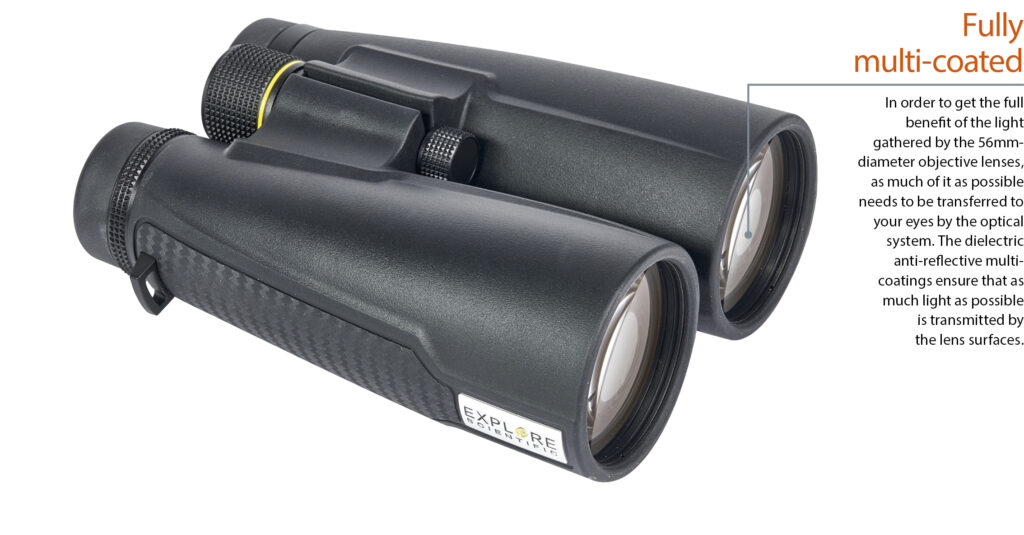
Turning to the Moon, the lunar terminator showed a lot of detail and remarkably little false colour near the middle of the field of view. We did notice a bit of glare in the tube nearest the Moon when it was just to the side (but not above or below) the field of view, but it was not apparent when we were observing the Moon itself.
Explore Scientific’s G400 15×56 binoculars would suit someone who already has smaller hand-held binoculars but is looking for an additional, well-made, compact and robust pair for travel. Suitable for both astronomy and general use, overall we found them a joy to use.
Prism phase coatings
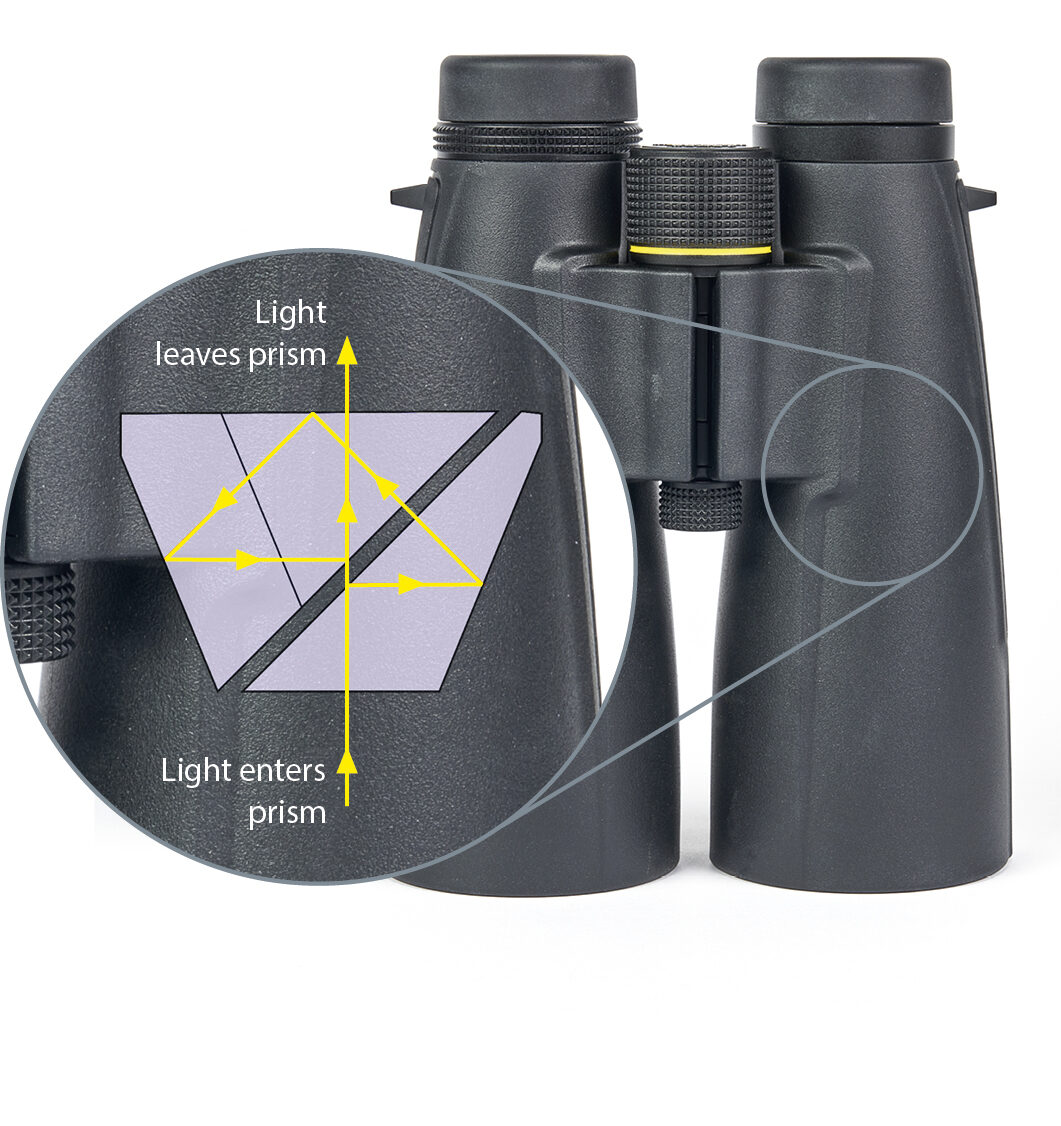
Explore Scientific’s G400 15x56s use Schmidt-Pechan roof prisms. With these prisms, for part of the light’s route through the system it is split and takes two different paths which then recombine before passing to the eyepieces. Due to the wave nature of light, the rays from the two different optical paths are consequently out of phase when they recombine. If this phase difference isn’t corrected, the result is an image that suffers from reduced colour rendition, sharpness and contrast.
Like all the best roof prism binoculars, the prisms in the G400 15x56s have the appropriate surfaces coated with what are called phase coatings. These ensure that the split rays are in phase when they are recombined so the negative effects of splitting and recombining the rays don’t occur. The result is faithful colour rendition, excellent sharpness in the middle of the field of view and strikingly good image contrast.
KIT TO ADD
1. Bresser binocular tripod adaptor deluxe
2. BX-5 Pro video tripod
3. Bresser smartphone universal adaptor
VERDICT
